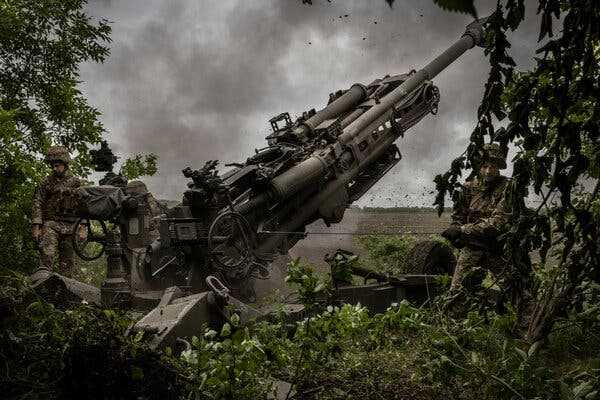Much of the public discourse about arming Ukraine has revolved around whether the United States will send “long range” weapons. But that can mean different things.
Listen to this article · 7:39 min Learn more
- Share full article

A Ukrainian gun crew with an M777 howitzer, which fires 155-millimeter artillery shells, in 2022.
There are roughly 500 miles between Kyiv and Moscow.
The United States has weapons that can fly much farther than that, but it is unlikely to supply them to Ukraine for fear that an attack on the Russian capital with American weapons might spark a third world war.
So within that 500-mile range the Biden administration has been pushed repeatedly to give Kyiv weapons that can hit targets as far away as possible. Discussion among Ukraine’s supporters often centers on calls for “long range” weapons — a term with no real military definition, but that has an emotional pull Ukrainian leaders have used to pressure the White House for ever more capable munitions.
Over two and half years of war, “long range” has evolved in the public forum to describe a host of increasingly advanced U.S. weapons. The trend began soon after Russia’s 2022 invasion, when U.S. government officials first used the term to apply to …
Artillery
ImageSeveral 155-millimeter howitzer shells waiting to be fired in Ukraine’s Donetsk region in March.Credit…Nicole Tung for The New York Times
The United States has sent Ukraine the longest-range artillery pieces in its arsenal: 155-millimeter howitzers, which can fire 100-pound shells at targets about 20 miles away. Each shell contains about 24 pounds of explosives.
Since the beginning of the war, the United States has shipped three million M795 artillery shells to Ukraine for the weapon to fire. That model can be fitted with a guidance kit that steers the projectile to its target, though there is no evidence to suggest the Pentagon has sent those devices to Kyiv.
We are having trouble retrieving the article content.
Please enable JavaScript in your browser settings.
Thank you for your patience while we verify access. If you are in Reader mode please exit and log into your Times account, or subscribe for all of The Times.
Thank you for your patience while we verify access.
Already a subscriber? Log in.
Want all of The Times? Subscribe.
SKIP ADVERTISEMENT
Source: nytimes.com



